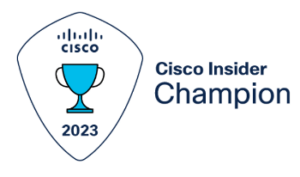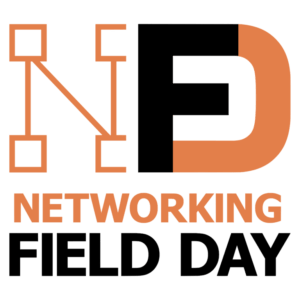Edge (Computing, Networking, Security, etc.) is one of the recent hot topics, getting some well-deserved attention lately. And of course, edge security goes with that. (Does that make security the French fries of networking?)
So, what’s up with all that?
This blog will explore the topic of Edge and some of what I think are key factors around Edge. My intent is a survey of key aspects, and links to more Edge content.
As you probably know, I’m a fan of, and occasional participant in, TechFieldDay events. It’s a good way to learn more about current and new vendors and products. Consequently, you’ll find a TFD focus in the links section below, reflecting familiarity and comfort zone. They’re a handy resource for taking a deeper dive into Edge.
What is Edge?
Edge computing is about putting compute and other resources closer to platform users than traditional data centers, CoLo, and Cloud locations. (Wow, my brain thinks Cloud is already “traditional”.)
Obviously, that might add human and financial costs, so there would need to be a good reason to do that.
Why Do Edge?
One key reason to do edge is latency. If you need very rapid responsiveness for transactions, replies.
Another reason is to move computing and data locally, with only data rollup and lower volume of data crossing the network or Internet. In other words, reducing data transfer and/or storage costs (or thinking of it as distributing the storage).
Cost factors will likely drive the choice to do Edge. Or also reliability, especially where WAN links might be unreliable or over capacity.
Storing the data where it is generated and making it available for central analysis on demand distributes the storage and costs to some extent. Although managing that is likely to be more complex. It also means your WAN links require less bandwidth and hence cost less. Trade-offs!
Lower cost WAN might scale better, e.g., for retailers, but might require local robustness and data storage to cover for lower reliability, and data rollup to reduce bandwidth demands.
Both might be factors in locations without extensive network/Internet deployment, e.g., “third-world”.
But Edge is also about doing more. So even if high-speed links with good reliability are available, application and/or cost factors may drive pushing compute and storage out to the edge.
Possible Use Cases for Edge
- Gaming (latency!)
- Delivering media content, including Video on Demand (latency!)
- Video surveillance (data volume!)
- Remote monitoring of devices, especially things like large collections of pumps, etc. in remote locations
- Survivable in-hospital patient monitoring (with local monitoring, also backed up centrally, plus local, and centralized alerting)
- Local analytics (only alerts get sent upstream)
Key Enablers and Challenges for Edge
Stepping back, there’s one glaring key enabler for Edge at any significant scale: Automation.
There are some key challenges:
- Building or buying the Automation solution(s)
- Possibly dealing with large volumes of data (or using Edge to keep that data locally distributed, rather than consuming bandwidth transmitting it to huge central storage)
- Managing, backing up, and securing remotely distributed data
- For some: managing anything at scales such as N x 10,000 sites
As far as the business side, there’s a balance needed: complexity and ability to absorb new technology versus the value of new capabilities to the business— and additional staffing needs.
Pete’s Take on Edge
Hype check: sometimes, things in Tech get overblown. No, really! (Always?)
For example, we have AI fever taking place right now. Lots of potential but early days with a lot of claims that the technology does more than it actually does well.
And there’s bitcoin: overhyped, and to my mind, currently pointless (burns lots of computing and power for no real gain, and adds complexity), also the caveat that those doing the hype look to gain from it, either as business or for fraud purposes. (Yes, that’s possibly contentious, but after 20 years, if there were a good real use for Bitcoin, we’d have heard about it by now from reliable sources.) I hope the bitcoin as dazzling bait for the fraud cycle has diminished.
The good news is Edge is not as overhyped and does have true potential. Or maybe the Edge hype wavefront has already moved on, and we’re down to real Edge activity. I’ll also note that some aspects of Edge reflect what is already being deployed. As noted above, the bad news is that Edge can be hard. More on that below.
Timing of other hot technologies is also something to consider. My sense is that cloud and hybrid cloud uptake is still in a protracted assimilation stage, tying up most corporate mind-share concerning application re-design and deployment for some time to come. Obviously, it is likely to be hotter for startups and greenfields. This affects Edge: until your organization encounters a problem Edge solves, you’re unlikely to be looking at it.
Another key factor to Edge adoption is scale versus degree of internal or cloud automation. For small scale, e.g., a few U.S.-only regional Edge locations, maybe not that big a deal. For 10,000 sites and/or global, you need more and better-automated deployment, management, operations, and security tools!
An analogy comes to mind: surfing. No, I don’t surf. But we have waves of technology coming faster and faster. No one person or organization can “ride” all those waves. You have to pick and choose. And as soon as you invent (time, money) in one trend, along comes something newer and shinier. But if you shift constantly, you get nothing done. So pick your wave and stick with it as far as it’ll go! Or until there is a compelling reason to jump on another wave and funding to complete the prior work plus the new work.
Forms of Edge
Costs, size of footprint, locations, and number of instances all likely vary with the applications Edge is to be used for.
Edge computing might be done on-prem, e.g. in a small rack in a retail location. Perhaps a small server (NUC etc.?), Kubernetes, local storage, converged switch/router/firewall/ZT box. Multiplied by many retail locations.
Edge computing might also be done in or near cell towers or in many small regional sites, probably hosted by some sort of Edge provider. Those could be CoLo or hosted satellite sites, with some mix of small + very local versus medium but less local.
Edge might consist of some form of server, storage, network, security stood up in many local CoLo facilities, using automation from the CoLo vendor. That could be useful in terms of the CoLo serving sites within small regions, cutting down on the number of locations needing automation. Leasing bare metal or virtual devices could provide velocity (no purchase or long-term contract needed?).
Cell tower adjacency seems to me to be likely to be costly, and useful, perhaps for cellular-based applications or connectivity.
Another way of looking at this is Near vs Far. For info about that, see the link below, replicated here.
Scale Always Gets Larger
I see Edge Computing as a natural outgrowth of current computing and networking trends.
Nick Lippis and others have noted that the Amazon and Cloud Provider level of automation opened the door to Compute and Storage services and that NaaS is the natural extension of that to networking. In other words, tech trends start somewhere (usually where the biggest market is), then as the idea proves itself, it gets adapted for other tech areas or markets. Generally going from big (markets, customers) to smaller.
Over my career, I’ve also observed a tendency to do Something, which rapidly evolves into doing A Lot of Something. Admittedly, I’ve personally sometimes leaped right to the wanting to do a lot of whatever Good Thing, perhaps sometimes over-estimating how easy it might be to do the Lot of Something part.
As an example, this is happening now in the ThousandEyes/CatchPoint/Netbeez (etc.) Network Monitoring space. We started with onesy-twosy automated path characteristic measurements for a few key paths or traffic flows. Netbeez running on lower-cost compute platforms provided one way to do that at larger scale. Cisco running ThousandEyes in switch containers another (ditto containerized CatchPoint). But then strong cloud or central managing GUI hosted sites, and containers have acted as enablers for doing performance polling from many more locations and with increasing levels of sophistication (e.g. application performance monitoring, not just overall but at various intermediate stages.
So, concerning Edge, one potential key enabler is perhaps functionality such as AWS Outposts, Azure Stack, etc., coupled with some NaaS. NaaS fits nicely since outsourcing deployment and management may be far more cost-effective at large scale, and might keep a project focused on delivering business value.
That’s the cloud form of this progression, and there are evolving Edge automation providers who may offer better cost structures or better focus on unique Edge computing needs. (Regarding vendors, see also Edge Field Day events.) For example, I’ve been learning about NodeWeaver recently and may blog about it. They plan to be at Edge Field Day 2, planned for October.
Conclusions
Edge is here to stay. Current applications of Edge may initially be specialized. But as capabilities grow, Edge will enable far larger scale. Thinking retail, perhaps per-store, is the initial use: capturing transactions locally for reliability and forwarding them in batches when the uplinks are working or in evening hours. As things progress, maybe the scale goes up, with the roll-up of fire sensors, anti-theft sensors, and many IOT objects within the retail store. Video customer behavior monitoring? Tied to customer identity for targeted marketing, discount on what they paused to examine, etc.?
Similarly for other settings, e.g., hospital/clinic chains.
Links
Gestalt IT Podcasts:
- Application-First Approach for Enhanced Efficiency of Edge Computing
- Designing a Scalable Edge Infrastructure with Scale Computing
- Exploring the Distinction Between Near Edge and Far Edge Computing
- Gestalt IT Utilizing Tech Podcasts Archive page (including more Edge-y material)
- Edge Field Day 1 (February 2023)
The following are the per-vendor pages from Edge Field Day 1 (EFD1), with links to blogs and other content:
Selected blogs:
- Ben Young’s blog: Time to Recalibrate Your Views on Edge Computing
- Edge Field Day 2 (Upcoming, July 2023)
(Google Search of “edge computing” or “edge computing gestalt it” will provide a lot more content for your reading or viewing pleasure!)
Let’s start a conversation! Contact us to see how NetCraftsmen experts can help with your complex challenges.



